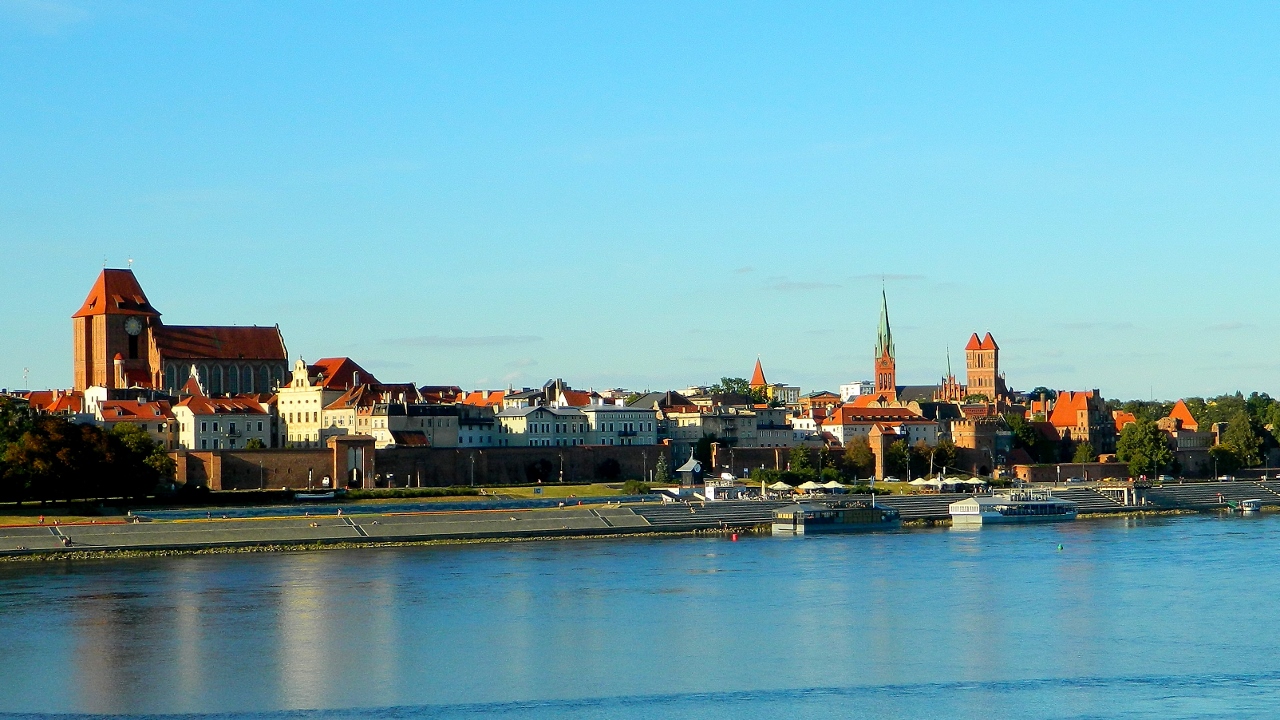Toruń was granted a foundation charter in 1233 by the nearby Teutonic Knights at Malbork, and in 1252 favourable trading rights.
At the end of the 1200s ‘Thorn’ as it was then known joined the Hanseatic League of powerful North Sea trading towns and began a glorious expansion that continued through the 1400s when the locals finally saw off the commanding Knights, destroying their riverside fortress, and ushering in the birth of town’s most famous son, Nicholas Copernicus around 1473.

To reach Toruń we travelled along the A1 toll road (costing a mere £5 for nearly 90 miles) on a perfectly tarmacked and hardly busy motorway, light relief after more than 400 fairly rough Polski miles.
We found a cheerful, if not auspiciously named, campsite (Camping Tramp) just across the Vistula also called Wisla river, and headed across the long vehicle, bicycle and pedestrian bridge into town.
Like Kraków, but unlike most other Polish towns of significance, Toruń escaped damage in the Second World War and remains intact and fully restored. It is a glittering medieval jewel that boasts Gothic red brick churches, fortifications, winding cobbled streets, granaries, impressively gabled town squares, merchants houses and the robust feeling of a successful Hanseatic port.
The town is protected from the river by a buttressed defensive wall through which gates lead onto cobbled streets into the centre and ultimately its heart, the Ryneck. The pretty square is dominated by the red-brick Town Hall. At street level anecdotal bronze sculptures recall a frog-charming violinist and a former ‘punishment-for-lowlifes’ donkey with an excruciating saddle of a bronze blade.

We meandered along to the ‘new town’ built just 30 years after the old one and saw a charming sculpture of a young baker and her dog commemorating an important bakery of the 1700s.
The wide and pedestrian main street took us past characterful former merchants houses, covered in plastered reliefs, painted scenes and sometimes with bay windows and balconies, now home to designer clothes stores and gingerbread ‘pierniki’ shops.
The cathedral of Two Saint Johns was largely closed inside as a priest walked a young couple through their pre-marital paces up the aisle and to the elaborate alter, so we didn’t get to see the font where Copernicus was baptized, set as he was to change the course of the world by understanding that the sun, not the earth, formed the centre of the universe.
Along the riverside we visited the ruins of the castle, and protective fortress, of the Teutonic Knights. After 150 years of threatening Poland the locals retaliated and following the acquisition of Marienburg by the King in 1466 the Toruń locals rebelled and threw the Knights out of town. They razed the castle; leaving standing what is thought to be the ‘toilet’ tower. In the hot sunlight we spent a childish few minutes coming up with jokes.
Having bought some gingerbread treats to nibble on (surprisingly more cake-like than biscuit) we finished our tour on the banks of the Vistula along with office workers, students and locals enjoying the early evening sunshine.
Riverside restaurant boats started to attract well-dressed diners to their strandkorbs on the upper decks and dog-walkers, skaters and cyclists whizzed by.
Toruń is a very lived-in and liveable town, perhaps the first we have come across in Poland. Both of us could imagine spending happy days here.
The walk back across the traffic-filled bridge with views back to the town felt already, a little nostalgic. A place to return to!








